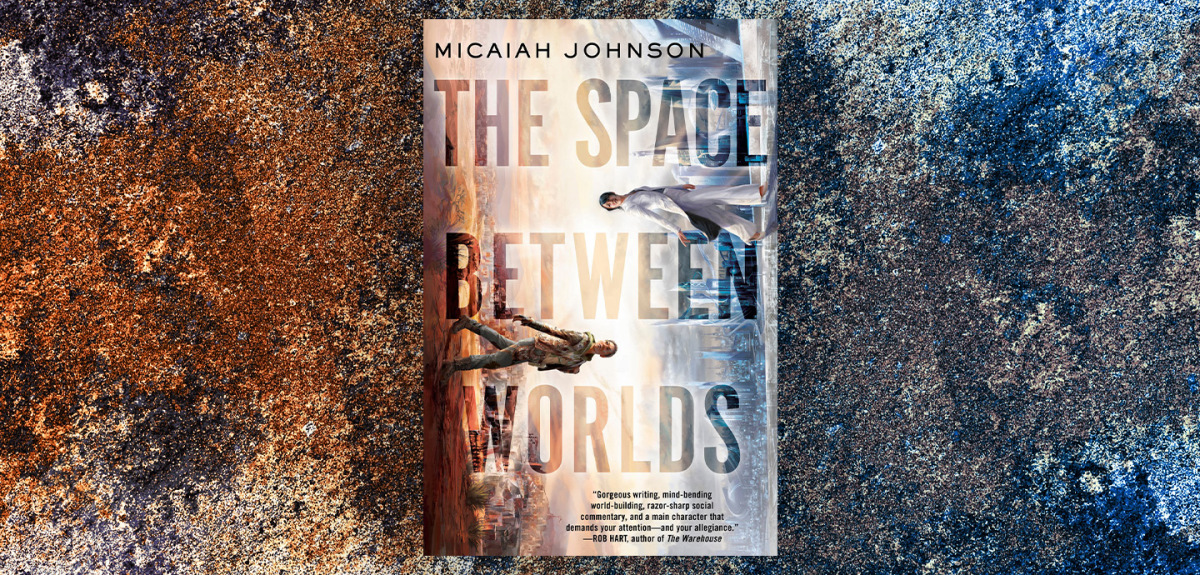[ad_1]
Sometimes the separation between the lived experiences of neighbors can be just as profound as if they grew up on different planets. Privilege, opportunity, and access can be shifted by the smallest geographic space, a city street, or a country’s border.
Few understand this truth better than the protagonist of Micaiah Johnson’s debut novel, Cara, whose job it is to travel through multidimensional space but who is still waiting to get citizenship in the very country she works for. Johnson’s The Space Between Worlds is a smart, exciting, and emotionally insightful book, which explores issues of race, privilege, borders, and identity within an apocalyptic setting somewhere between Elysium and Mad Max.
The Space Between Worlds opens on Cara, who is “traversing” into another dimension to collect information for her employer, the Eldridge Corporation. This extraordinary task is routine for Cara, who is at the top of her field due to her—or more precisely her multidimensional selves’—aptitude towards dying. This skill is important because, by some anomaly of physics or the mysterious god Nyame depending on who you ask, the only way to travel to another universe and survive is if your other self in that universe is already dead.
Cara, who grew up in the dangerous conditions of Ashtown, a desert empire/suburban slum which Johnson describes as “not so loosely based on California’s Mojave Desert where [she] was raised,” can travel almost all of the 382 discovered universes. This skill makes her valuable and allows her a level of wealth and comfort in the walled city that abuts her home, but cannot fundamentally change her place within society. Despite a certain level of access and fame, she remains a tool of larger corporate interests and inescapably of her childhood home, Ash.
Cara’s story is driven by her dual experiences of the world, and the unique space she inhabits between worlds. As the book goes on, she is forced to balance these warring identities. At one point she describes her space between these two homes saying: “Wiley City is like the sun, and Ashtown a black hole; it’s impossible to hover in between without being torn apart.” Even as she tries to walk this tight rope, she simultaneously is trying to navigate her own traumatic past, relationship with her home, and romantic feeling towards a coworker while also discovering the insidious mystery of why no other dimensions have discovered the interdimensional technology of her own.
There is a lot going on in this journey, but the pace and movement of The Space Between Worlds are masterfully done, especially for a debut novel. The story is consistently engaging as Cara works through the various transformations and challenges of her life as a traverser and the ending, both in matters of character growth and plot development, is surprising and satisfying.
Not only is the story telling of The Space Between Worlds excellent, the book is also just plain smart. The many difficult issues of privilege, race, sexuality, gender and class are handled wonderfully throughout. Honestly, Johnson’s work could easily be used in the syllabus of a more adventurous sociology professor for all the varied topics it covers. A huge part of this success is her characters, who are all diverse and multidimensional, from Camela’s upper class love interest Dell to (my personal favorite) the enby sex-worker Exlee.
One of the joys of reading contemporary science fiction is seeing how new authors with new ideas can take older tropes and create a story that speaks to their own time and lived experiences. This joy was so present in this fantastic first novel by Johnson, and I am so excited to read more from her in the coming years.

FICTION
The Space Between Worlds
By Micaiah Johnson
Del Rey Books
Published August 4, 2020

[ad_2]
Source link
